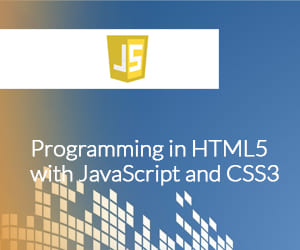Building modern, interactive web pages requires a powerful trio: HTML5, JavaScript, and CSS3. HTML5 forms the foundation, defining the structure and content of your webpage. It’s enhanced by HTML5’s new features like embedded media and improved forms. JavaScript, the client-side scripting language, breathes life into your web page by adding interactivity, handling user input, and creating dynamic effects like animations. Finally, CSS3 takes care of the visual presentation, allowing you to style your webpage with advanced features like smooth transitions and responsive layouts. When combined, these three technologies work together seamlessly to create engaging and visually appealing web experiences. Mastering this powerful combination opens doors to exciting web development careers and provides a versatile skillset applicable to building various websites and web applications.
- HTML5 Fundamentals:
- Document structure (elements, attributes, organization)
- Semantic elements (improved accessibility and meaning)
- New features (embedded media, canvas, offline storage)
- Forms (creation, input types, validation)
- JavaScript Fundamentals:
- Programming basics (variables, data types, operators, control flow, functions)
- DOM manipulation (adding, removing, modifying elements)
- Event handling (user actions, clicks, scrolls, form submissions)
- Asynchronous programming (handling long-running tasks)
- CSS3 Fundamentals:
- Selectors (targeting elements and styles)
- Layout (float, flexbox, grid)
- Visual effects (animations, transitions, transformations)
- Responsive design (adapting to different screens)
- Advanced Topics:
- JavaScript libraries and frameworks (e.g., jQuery, React, Angular)
- Web APIs (interacting with external data sources and functionalities)
- Accessibility considerations (building usable web pages for everyone)
- Project-Based Learning:
- Building real-world projects to solidify understanding and gain experience
- Formal: None required.
- Recommended:
- Computer literacy (operating systems, file management, text editors)
- Web browsing basics (website functionality, web page elements)
- Optional, but beneficial:
- Basic programming concepts (variables, data types, control flow)
- Prior exposure to HTML and CSS
